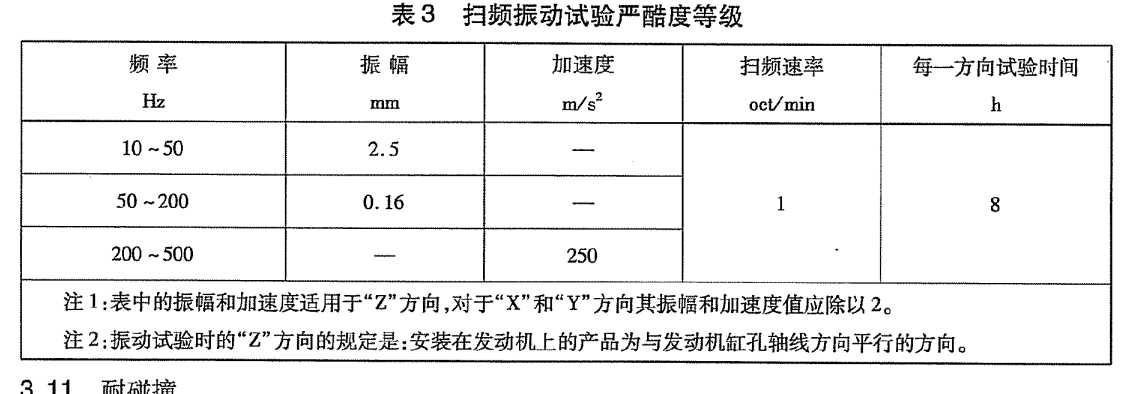The Engine is the heart of the automobile power system, with the complex structure, and the number of parts, the stable work needs all parts have good reliability. So the quality of the oil pressure sensor is the most core problem.
Our Pressure sensor factory has been focusing on the R&D and production of pressure sensors, temperature sensors, fuel level sensors, speed sensors etc… over 25 years of pressure sensor professional technical experience… has been obtained the QC/T822-2009, ISO/TS16949, RoHs and Reach Certificates.
So today let,s us to know : Automobile industry standard of the People’s Republic of China

Standard numbe:r QC/T 822-2009 Engine oil pressure sensor for automobile
Release date: November 17, 2009 The implementation date is April 01, 2010 Expiration date none
China Standard classification number T35
International Standard Classification number 43.040.10
Release unit industry standard – Automotive
Step 1: Scope :
This standard specifies the requirements, test methods, inspection rules and marks, packaging, storage and custody of engine oil pressure sensors for automotive (hereinafter referred to as sensors).
This standard applies to engine oil pressure sensors for automotive applications. Other motor vehicle engine oil pressure sensors can also refer to the execution.
3 Requirements
3.1 General Requirements
3.1.1 Product Documents :
3.1.1.1 Sensors shall comply with the requirements of this standard and shall be manufactured according to the drawings and design documents approved by the specified procedure.
3.1.1.2 The appearance, installation size and standard of the sensor shall comply with the regulations of the product drawing.
3.1.1.3 The low-voltage wiring harness used by the sensor shall comply with QC/T29106 regulations.
3.1.2 Normal working environment conditions: See the table for normal working environment conditions.

3.1.3 Temperature range: See the table for working temperature and storage temperature range.

3.2 Electroplating and chemical treatment layer :Sensor electroplating and chemical coating shall comply with QC/T625 regulations.
3.3 Appearance :
3.3.1 The outer surface shall have no edges or sharp flying edges.
3.3.2 There should be no bubbles, pores, cracks, welds, impact marks, deformation, wall shrinkage, cracking and other phenomena.
3.4 Basic Error :Under the environmental conditions specified in 3.1.2, the basic error of the sensor shall not exceed ±10% of the nominal value of the measured point.
3.5 Response Time : When the test liquid pressure rises from zero to the nominal value of the upper pressure within 5s, the output value of the sensor should reach 90% of the nominal value of the upper pressure within 30S.
3.6 Overload :The sensor shall be able to withstand the overload test at 1.3 times the upper pressure without leakage, and shall comply with 3.4 after the test.
3.7 Temperature Impact : When the sensor carries out the temperature influence test according to the working temperature range shown in Table 2, the resulting change in the output value shall not exceed 5% of the nominal value of the detected point, and shall comply with the provisions of 3.4 after the test.
3.8 Waterproofing : After 8H waterproof test, the sensor shall comply with the provisions of 3.4.
3.9 Temperature shock Resistance: After 20 cycles of temperature shock test, the sensor shall have no deformation, and its energy shall meet the requirements specified in 3.2 and 3.3.
3.10 Vibration resistance: The pressure sensor should be able to withstand sweep vibration test in up and down, left and right, front and back directions. Test parameters are shown in Table 3. After the test, the sensor should not be damaged and comply with the provisions of 3.4.

3.11 Collision resistance:The pressure sensor and a steel plate with a minimum mass of 25KG 5 After such collision, there shall be no mechanical deformation and shall be fixed in accordance with 3.4.
3.12 Durability: The pressure sensor shall not have any mechanical damage after 60000 cycles of endurance test and shall comply with the provisions of 3.4.
3.13 Salt spray corrosion resistance: After 48H salt spray test, the corrosion area of the sensor shall not exceed 50% of its surface area, which shall comply with the provisions of 3.4.
—- Susana liu
Wuhan Chidian Technology Co.,LTD
Post time: Mar-28-2023

